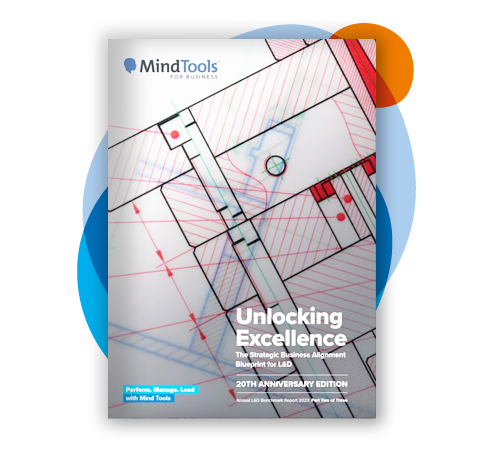Delve into the second installment of MindTools' "Annual L&D Benchmark Report 2023. This report, crafted from two decades of global research, delves into how learning and development (L&D) strategies can align with and propel business goals. It covers the influence of L&D on organizational performance, employee engagement, and the evolving demands of the business environment.

This resource is recommended for its educational value and is not an EDU Fellowship original work. All rights belong to the original creators. Credit: MindTools.
🚀 Actionable Insights: Gain access to specific, actionable insights and strategies derived from the report, enabling you to apply these learnings directly to your L&D initiatives.
🌟 Sarah's Transformational Journey: Dive into a detailed case study about how Sarah, an L&D professional, revolutionized her department using insights from the "Annual L&D Benchmark Report 2023: Part Two." Learn from her challenges, strategies, and triumphs.
📈 Data-Driven Approaches: Understand how to leverage data and analytics to enhance the effectiveness and ROI of your L&D initiatives.
Elevate your L&D expertise and become a strategic asset to your organization. Click here to unlock your Pro Member benefits and step into a world of advanced learning and development insights.
💡 The Big Ideas
Here's a concise summary of its key arguments and content:
Strategic Business Alignment: The report argues that L&D should not be seen as a standalone function but as an integral part of the overall business strategy. It emphasizes that L&D initiatives should align with the organization's goals and objectives. This alignment ensures that L&D contributes directly to business performance and is not just a peripheral activity.
The four stages discussed in the PDF:
- Stage 1: Doing a Lot but Achieving a Little: (51% of L&D teams surveyed are stuck here) - In this stage, L&D teams are highly active but lack synergy in their activities. There's a clear divide between behaviors they engage with consistently and those they engage with occasionally. The most powerful connections between behaviors are clustered around activities they're engaging with the least. Organizations in this stage often feel overwhelmed and underequipped (Page 13).
- Stage 2: Creating Space but Lacking Connection: As organizations move to stage 2, L&D teams gain clarity and reduce their activity significantly. They select a few important activities and do them well. However, there's a lack of interaction between the key practices of their model, leading to a skewed balance across activities (Page 14).




